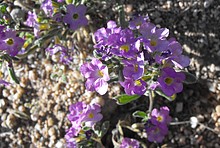Home PageAbout MindatThe Mindat ManualHistory of MindatCopyright StatusWho We AreContact UsAdvertise on Mindat
Donate to MindatCorporate SponsorshipSponsor a PageSponsored PagesMindat AdvertisersAdvertise on Mindat
Learning CenterWhat is a mineral?The most common minerals on earthInformation for EducatorsMindat ArticlesThe ElementsThe Rock H. Currier Digital LibraryGeologic Time
Minerals by PropertiesMinerals by ChemistryAdvanced Locality SearchRandom MineralRandom LocalitySearch by minIDLocalities Near MeSearch ArticlesSearch GlossaryMore Search Options
The Mindat ManualAdd a New PhotoRate PhotosLocality Edit ReportCoordinate Completion ReportAdd Glossary Item
Mining CompaniesStatisticsUsersMineral MuseumsClubs & OrganizationsMineral Shows & EventsThe Mindat DirectoryDevice SettingsThe Mineral Quiz
Photo SearchPhoto GalleriesSearch by ColorNew Photos TodayNew Photos YesterdayMembers' Photo GalleriesPast Photo of the Day GalleryPhotography
╳Discussions
💬 Home🔎 Search📅 LatestGroups
EducationOpen discussion area.Fakes & FraudsOpen discussion area.Field CollectingOpen discussion area.FossilsOpen discussion area.Gems and GemologyOpen discussion area.GeneralOpen discussion area.How to ContributeOpen discussion area.Identity HelpOpen discussion area.Improving Mindat.orgOpen discussion area.LocalitiesOpen discussion area.Lost and Stolen SpecimensOpen discussion area.MarketplaceOpen discussion area.MeteoritesOpen discussion area.Mindat ProductsOpen discussion area.Mineral ExchangesOpen discussion area.Mineral PhotographyOpen discussion area.Mineral ShowsOpen discussion area.Mineralogical ClassificationOpen discussion area.Mineralogy CourseOpen discussion area.MineralsOpen discussion area.Minerals and MuseumsOpen discussion area.PhotosOpen discussion area.Techniques for CollectorsOpen discussion area.The Rock H. Currier Digital LibraryOpen discussion area.UV MineralsOpen discussion area.Recent Images in Discussions
Techniques for CollectorsIron Out Causing Green Stain
16th Aug 2016 11:51 UTCGary Moldovany
16th Aug 2016 12:59 UTCAndrew Debnam 🌟
Andrew
16th Aug 2016 13:07 UTCGary Moldovany
16th Aug 2016 13:34 UTCHarold Moritz 🌟 Expert

16th Aug 2016 13:40 UTCBob Harman
My plan almost always calls for as short a soaking as possible to get some meaningful improvement in the specimen. A blanket overnight soaking or "1 day soaking", is in my opinion way too long for the vast numbers of MY specimens. Any soaking of this length will do more harm than good on most of MY specimens. Any soaking needed to be this long on a specimen OF MINE suggests to me that the example may not really be worth trying to meaningfully improve. But these are MY specimens and may not translate to yours. You have to be that judge.
Bottom line; shorter soaking times with repeat rinsings and repeat examination of the specimens to see the interim results as the iron out soaking continues. CHEERS.....BOB
16th Aug 2016 13:46 UTCMatt Courville
Matt
16th Aug 2016 13:54 UTCHarold Moritz 🌟 Expert
As Bob mentions, I generally agree that soaking as short as possible is important, especially for non-silicates. But I have found that quartz and primary silicates are unaffected by the long and repeated soaks needed for the tough stains commonly found on them. "Your results may vary"!

16th Aug 2016 13:59 UTCWayne Corwin
If I need to soak it for more than overnight (about 12 hrs) then I add some more SIO (a big spoon or 2) in the morning, and all seems ok.
Try a diffrent bucket, or try some distilled water maybe.
During the daytime soaks I like to leave the bucket where it gets sun all day, keeping it warm, that might help?
Let us know if any of these things help (tu)

16th Aug 2016 14:09 UTCBob Harman
16th Aug 2016 14:40 UTCHarold Moritz 🌟 Expert
And you shouldn't use it, especially for the $1000+ specimens, because of its low pH...tap water is very close to neutral, unless you have bad well water, which I do, in which case you need treatment for it for more important reasons...like home brewing. :)-D
I suggested it in this case to see if perhaps the tap water was an issue, but I cant see there being (or sure hope there aint!) elements in it at high enough concentration to cause such a problem...

16th Aug 2016 15:11 UTCEric Briggs
16th Aug 2016 15:30 UTCHarold Moritz 🌟 Expert
Very true about its efficacy, but oxalic acid is toxic and is not safe to pour down drains or especially into septic systems. SIO is much safer to use and to dispose of, so I recommend using it only where one is prepared to deal with those issues. Also more difficult to purchase oxalic acid, I can easily get SIO at my local hardware store. Oxalic acid can also create an insoluble hard yellow precipitate on specimens if not mixed correctly, so be very careful. Probably not friendly to calcite or other carbonates either.

16th Aug 2016 17:45 UTCAlfredo Petrov Manager

16th Aug 2016 18:16 UTCEric Briggs
It is true that oxalic acid is more toxic and should be handled with great care! It has very corrosive effects on metal, clothing, people, etc.
It is also more difficult to find, especially what I consider to be the right kind. I prefer the powder, not the premixed solution. The powder allows me to fine tune my solution.
I haven't had any issues with the insoluble yellow precipitate, but I did read another thread in which someone said that citric acid in the mix would react with the iron that causes that, and keep it from coming out of solution. I haven't tried it though.
The main thing is that I always use it hot (about 120 degrees) and never let it cool down with specimens in it (this goes for iron out as well). When they're ready to come out, I immediately rinse them and move them to clean hot water (generally as long as it was in the acid) replacing the water a few times to make sure there's no residual acid left.
Using hot oxalic acid has greatly shortened the time to remove the stains as compared to even hot iron out, in my experience, but this is by no means the right solution for every mineral. I always test first!

16th Aug 2016 19:07 UTCBob Harman
16th Aug 2016 20:12 UTCHarold Moritz 🌟 Expert
Now that you mention it, I did that once with a "greenie" and it went back to brown.
Eric:
Sounds like an excellent approach. I will stick with the SIO, given that I have a septic system only for disposal.
Bob:
Thanks for that tip, didnt know that!

17th Aug 2016 10:59 UTCJonathan Ertman
25th Aug 2016 09:56 UTCIan Nicastro
25th Aug 2016 15:57 UTCVolker Betz 🌟 Expert
the green hue is caused due to reduction of Fe (III) to Fe (II), the colour of Fe2+ is green. This can be dissolved with muratic acid, alternatively with citric acid ,ascobic acid, formic acid, acetic acid (vinegar) or oxalic acid . The last only if the mineral is free of Ca, otherwise a (white) layer of unsoluble Ca-oxalate ist formed.
I some cases hydogenperoxide is a tool to remove the green layer, it als oxidizes the Fe(II) to Fe (III) again.
Volker
25th Aug 2016 19:29 UTCAdam Berluti
Volker:
Thanks for the explanation of the green staining. It always bothered me why it formed. That makes sense.




Mindat.org is an outreach project of the Hudson Institute of Mineralogy, a 501(c)(3) not-for-profit organization.
Copyright © mindat.org and the Hudson Institute of Mineralogy 1993-2024, except where stated. Most political location boundaries are © OpenStreetMap contributors. Mindat.org relies on the contributions of thousands of members and supporters. Founded in 2000 by Jolyon Ralph.
Privacy Policy - Terms & Conditions - Contact Us / DMCA issues - Report a bug/vulnerability Current server date and time: April 19, 2024 00:25:45
Copyright © mindat.org and the Hudson Institute of Mineralogy 1993-2024, except where stated. Most political location boundaries are © OpenStreetMap contributors. Mindat.org relies on the contributions of thousands of members and supporters. Founded in 2000 by Jolyon Ralph.
Privacy Policy - Terms & Conditions - Contact Us / DMCA issues - Report a bug/vulnerability Current server date and time: April 19, 2024 00:25:45











